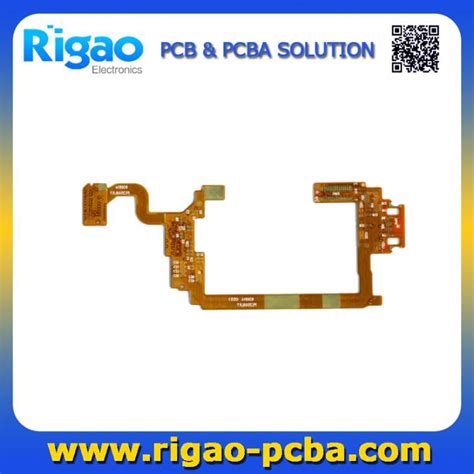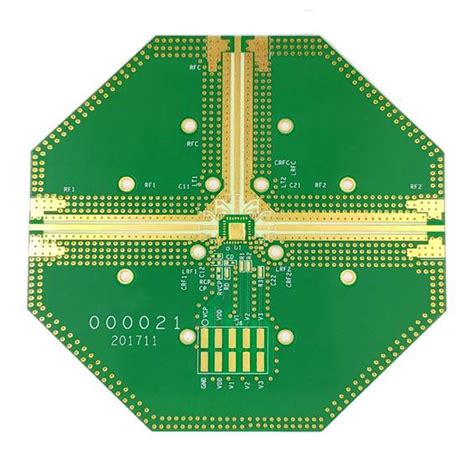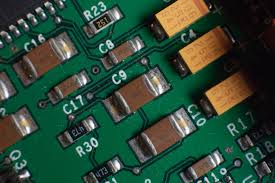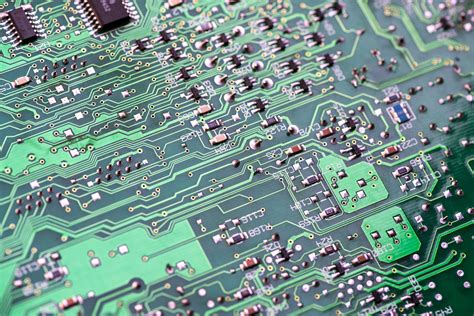Unlocking Innovation: The Future of Custom Electronic Assembly
Key Takeaways
The custom electronic assembly landscape is rapidly evolving, driven by advancements in pcb assembly technologies and the increasing demand for tailored solutions. As industries adapt to new challenges, the importance of pcba (printed circuit board assembly) continues to grow, pushing manufacturers to innovate. A key takeaway is that automation and robotics play a crucial role in enhancing assembly processes, leading to greater efficiency and precision. Additionally, the adoption of smart technologies such as Artificial Intelligence (AI) enables more agile manufacturing practices, allowing companies to respond swiftly to market changes. Embracing sustainability practices presents both challenges and opportunities for manufacturers seeking to reduce their environmental impact while maintaining profitability. Finally, the importance of skill development cannot be overstated; preparing the workforce for emerging technologies in custom electronic assembly ensures a future-ready industry capable of meeting evolving consumer demands. As these elements intertwine, they pave the way for innovative solutions that not only drive efficiency but also foster creativity within manufacturing environments.
The Evolution of Custom Electronic Assembly: A Historical Perspective
The journey of custom electronic assembly is one marked by innovation and adaptation. The roots of this industry can be traced back to the early days of electronics when components were primarily hand-soldered onto pcbs (printed circuit boards). However, the demand for intricate designs and higher efficiency led to the rise of pcb assembly technologies that revolutionized manufacturing processes.
In the late 20th century, the introduction of surface mount technology (SMT) significantly transformed pcba practices. This technology allowed manufacturers to place components on both sides of the PCB, increasing circuit density and reducing the overall size of electronic devices. As globalization took hold, companies began outsourcing many aspects of production, giving rise to a more efficient supply chain in custom electronic assembly.
Today, we witness an era where custom electronic assembly is heavily influenced by cutting-edge technologies such as automation and robotics. These innovations not only streamline production but also improve quality control through precise assembly methods. With advancements in pcba, like machine learning algorithms that optimize assembly lines, manufacturers can respond swiftly to market demands while maintaining high standards.
| Year | Milestone |
|---|---|
| 1960s | Introduction of hand-soldered components |
| 1980s | Advent of surface mount technology (SMT) |
| 2000s | Emergence of automated assembly techniques |
| Present Day | Integration of AI in monitoring production flows |
“The evolution from manual to automated processes has not only increased productivity but also fostered a creative environment where innovation thrives.”
As we expand our understanding of this field, it’s crucial to recognize how historical advancements lay the groundwork for future developments in custom electronic assembly. The continuous evolution shapes current practices while providing insights into future innovations that promise to drive efficiency and creatively enhance manufacturing solutions.
Key Technologies Reshaping the Custom Electronic Assembly Industry
The landscape of custom electronic assembly is continually evolving, driven by innovative technologies that are transforming how electronic components are manufactured and assembled. One of the most significant developments in this field is the rise of smart manufacturing technologies, which utilize data analytics and the Internet of Things (IoT) to streamline processes and improve product quality. Techniques such as surface mount technology (SMT) and through-hole technology have also seen enhancements, allowing for increased precision in PCB assembly.
Moreover, advancements in robotics play a crucial role in making assembly processes more efficient. Automation minimizes human error, speeds up production times, and optimizes resource use. The integration of machine learning algorithms further enhances manufacturing capabilities by predicting failures and enabling proactive maintenance schedules. Tools used in PCBA have also evolved to incorporate advanced inspection technologies like automated optical inspection (AOI), ensuring that each assembly meets stringent quality standards.
In addition to efficiency and accuracy, there is a growing emphasis on sustainability within the industry. New materials and methods are being adopted to reduce waste during production processes while meeting consumer demand for environmentally friendly products. This commitment to sustainability is essential as companies navigate regulatory pressures and consumer expectations.
Overall, these key technologies are not just reshaping how custom electronic assembly operates; they are unlocking opportunities for unprecedented innovation within the sector. As these trends continue to develop, businesses that adapt will find themselves well-positioned in this dynamic marketplace.
Trends to Watch: The Future Directions of Custom Electronic Assembly
As the landscape of custom electronic assembly continues to evolve, several key trends are emerging that promise to redefine the industry. One of the most significant developments is the increasing emphasis on flexibility and scalability in pcb assembly processes. Companies are now seeking solutions that not only allow for mass production but also accommodate smaller, specialized runs that cater to niche markets. This shift is partly driven by consumer demand for personalized products, which necessitates a greater adaptability in manufacturing capabilities.
Additionally, advancements in automation and robotics are playing an essential role in enhancing efficiency and precision within the assembly lines. The integration of smart technologies facilitates real-time monitoring and optimization of assembly workflows, thereby reducing errors and lowering production costs. The emergence of Industry 4.0—characterized by interconnectivity between machines—further amplifies this trend.
Another critical factor reshaping the future of pcba is sustainability. As environmental concerns mount, manufacturers are increasingly focused on adopting eco-friendly practices and materials within their processes. This not only mitigates environmental impact but also resonates with a growing demographic of environmentally conscious consumers.
Moreover, as we navigate towards a more digital landscape, data analytics will become indispensable for informed decision-making in custom electronic assembly. By leveraging big data, companies can predict trends, optimize supply chains, and enhance product quality.
Overall, as these trends unfold within the realm of custom electronic assembly, they create a realm filled with opportunities for innovation and efficiency—proving that adaptability is key to thriving in this dynamic industry.
Innovative Solutions Driving Efficiency in Electronic Manufacturing
The field of custom electronic assembly has witnessed remarkable advancements, particularly in the realm of pcb assembly and pcba processes. Innovative solutions, such as advanced machine learning algorithms and Internet of Things (IoT) integration, are fundamentally transforming how manufacturers approach production. These technologies not only streamline operations but also enhance quality control, minimizing errors in the assembly line. Moreover, the adoption of collaborative robotics allows for greater flexibility and efficiency by automating repetitive tasks while enabling human workers to focus on more intricate and complex components within the assembly process. As companies prioritize these innovative methodologies, they are increasingly able to achieve shorter turnaround times and optimize resource utilization – a vital aspect of competing in today’s fast-paced market. Embracing such cutting-edge solutions not only drives efficiency but also fosters an environment conducive to continuous improvement, ensuring that manufacturers remain agile and competitive in the evolving landscape of custom electronic assembly.
The Role of Automation and Robotics in Custom Assembly Processes
The integration of automation and robotics has transformed the landscape of custom electronic assembly, particularly in pcb assembly and pcba processes. By automating repetitive tasks, manufacturers can enhance productivity while minimizing human error. This shift not only accelerates assembly times but also allows for greater precision in intricate designs, a crucial factor in today’s fast-evolving technological environment. Robots equipped with advanced sensors can adapt to varying assembly specifications, making them an invaluable asset in the production line. Furthermore, the implementation of collaborative robots—often referred to as cobots—is proving that human-robot partnerships can lead to innovative solutions that optimize workflows and improve safety on the shop floor. As industries aim for higher efficiency and output quality, utilizing automation in conjunction with sophisticated robotics presents an exciting frontier for custom electronic assembly, especially when it comes to producing highly complex pcba solutions swiftly and reliably. The marriage of these technologies not only drives operational efficiency but also cultivates a culture of innovation that is essential for success in this competitive market.
Sustainability in Custom Electronic Assembly: Challenges and Opportunities
The field of custom electronic assembly, particularly with respect to PCB assembly (Printed Circuit Board assembly), is increasingly confronted with the dual challenges of enhancing efficiency while prioritizing sustainability. As manufacturers face mounting pressure to reduce waste and minimize their carbon footprints, there is a significant shift towards integrating eco-friendly materials and processes into PCBA production. However, this transition is not without its obstacles. For instance, sourcing sustainable materials often leads to increased costs and requires careful considerations regarding performance trade-offs. Meanwhile, as technology evolves, companies find innovative solutions—such as the use of advanced automated systems—to improve efficiency without sacrificing environmental responsibility. The opportunity lies in adopting a circular economy model, where components are designed for longevity and ease of recycling. By navigating these challenges effectively, organizations can not only enhance their operational resilience but also align themselves with growing consumer demand for sustainable practices in the manufacturing sector. Thus, the future of sustainability in custom electronic assembly presents both hurdles and avenues for transformative change that can set industry standards while fostering an environmentally-conscious approach to modern manufacturing.
Real-world Applications: Case Studies of Successful Implementations
The landscape of custom electronic assembly has witnessed remarkable real-world applications that underscore its importance in various industries. One compelling example can be found in the automotive sector, where advanced driver-assistance systems (ADAS) rely heavily on precision pcb assembly techniques. Companies have successfully integrated pcba solutions to enhance vehicle safety and improve overall functionality. For instance, one manufacturer utilized custom electronic assembly to develop a sophisticated sensor module, which not only ensured real-time data processing but also streamlined the integration of different vehicular systems. Another notable application is in the field of consumer electronics, where manufacturers are tapping into pcb assembly methods to produce wearable devices that track health metrics with enhanced accuracy. This has not only revolutionized personal fitness but also has tremendous implications for preventive health care. Furthermore, medical device companies are harnessing innovative pcba frameworks to create life-saving technologies, such as portable diagnostic tools that can be assembled rapidly yet maintain exceptional reliability. These case studies highlight how efficient and creative strategies in custom electronic assembly can lead to groundbreaking solutions in today’s fast-evolving marketplace. Each example reinforces the critical role that meticulous custom electronic assembly plays across diverse sectors, paving the way for future innovations and enhancing operational efficiencies.
Skills for the Future: Preparing for Careers in Custom Electronic Assembly
In today’s rapidly evolving landscape of custom electronic assembly, individuals aspiring to establish a successful career in this field must develop a diverse skill set. The importance of expertise in pcb assembly and the responsibilities associated with it cannot be understated, as professionals are expected to navigate complex designs and ensure precision. Proficiency in advanced technologies like automated assembly lines, integrated circuits, and pcba (Printed Circuit Board Assembly) techniques will be essential. Additionally, a strong foundation in problem-solving and critical thinking will empower these professionals to innovate processes and troubleshoot effectively. Hands-on experience with simulation tools and software for design verification is also increasingly valuable, as it aids in reducing time-to-market while enhancing quality. Moreover, fostering collaboration skills is pivotal; working closely with multidisciplinary teams ensures that diverse perspectives are incorporated into the decision-making process. As sustainability becomes more crucial within electronic production, understanding eco-friendly materials and practices will further distinguish candidates in this competitive arena. Overall, those who wish to thrive must embrace lifelong learning and adaptability in order to keep pace with the continuous advancements that define the industry.
Conclusion
As we look towards the future of custom electronic assembly, the landscape is being reshaped by numerous innovative elements. The advent of advanced PCB assembly techniques and refined processes for PCBA are paving the way for unprecedented efficiency and flexibility in production. Transitioning from traditional methods to automated processes not only accelerates assembly timelines but also enhances precision, reducing the likelihood of errors. Additionally, emerging trends such as industry 4.0 are integrating IoT capabilities into manufacturing, facilitating real-time tracking and analysis of assembly lines. As companies strive to meet consumer demand for bespoke solutions, investing in robust technologies becomes vital. This transformative approach is not just about keeping pace with competition; it’s also about unlocking new sources of creativity and sustainability within the industry. With a focus on innovative solutions, the future holds great promise for professionals eager to embark on a career in this dynamic field, as they adapt to evolving market needs while contributing to a greener, more efficient manufacturing ecosystem.
FAQs
What is custom electronic assembly?
Custom electronic assembly refers to the specialized production processes where electronic components are systematically assembled into a functional product. This includes PCB assembly and PCBA, which are critical for ensuring optimal functionality in various devices.
What technologies are currently influencing custom electronic assembly?
Key technologies reshaping the industry include advanced robotics, automation, and emerging materials that enhance the performance and efficiency of PCB assembly processes. These innovations streamline production and reduce errors.
What are common applications of custom electronic assembly?
Custom electronic assembly is utilized across various sectors such as consumer electronics, automotive, medical devices, and telecommunications. These industries rely on effective PCBA to deliver high-quality products that meet user demands.
How does automation impact custom electronic assembly?
The integration of automation in custom electronic assembly significantly increases precision and efficiency while reducing lead times. Robotic systems can handle complex tasks in the PCB assembly process, thus minimizing human error.
What skills are essential for a career in custom electronic assembly?
Aspiring professionals should focus on acquiring skills related to circuit design, automation technologies, quality assurance, and troubleshooting techniques relevant to PCBA. Continuous learning about advancements in technology will also be beneficial.







